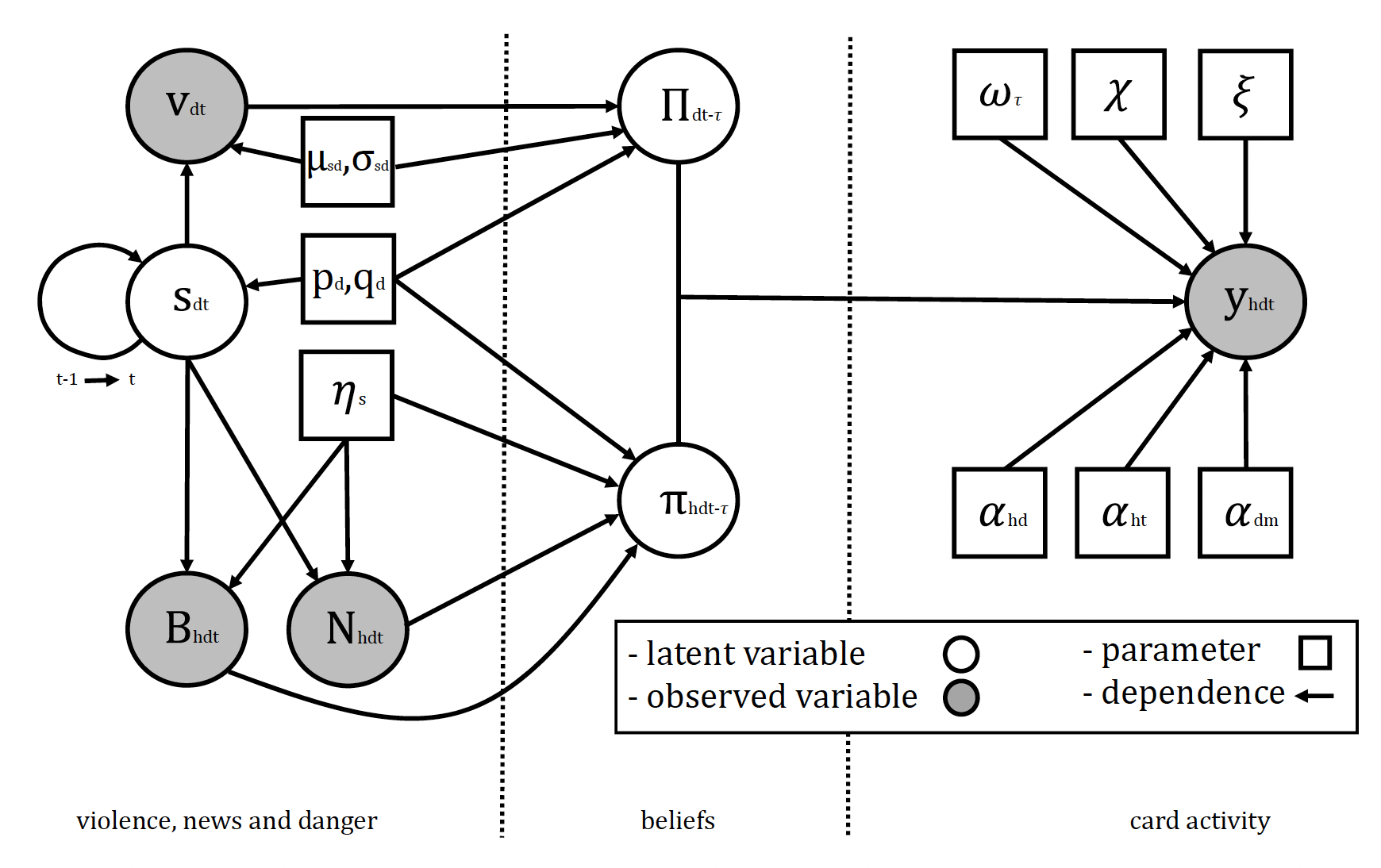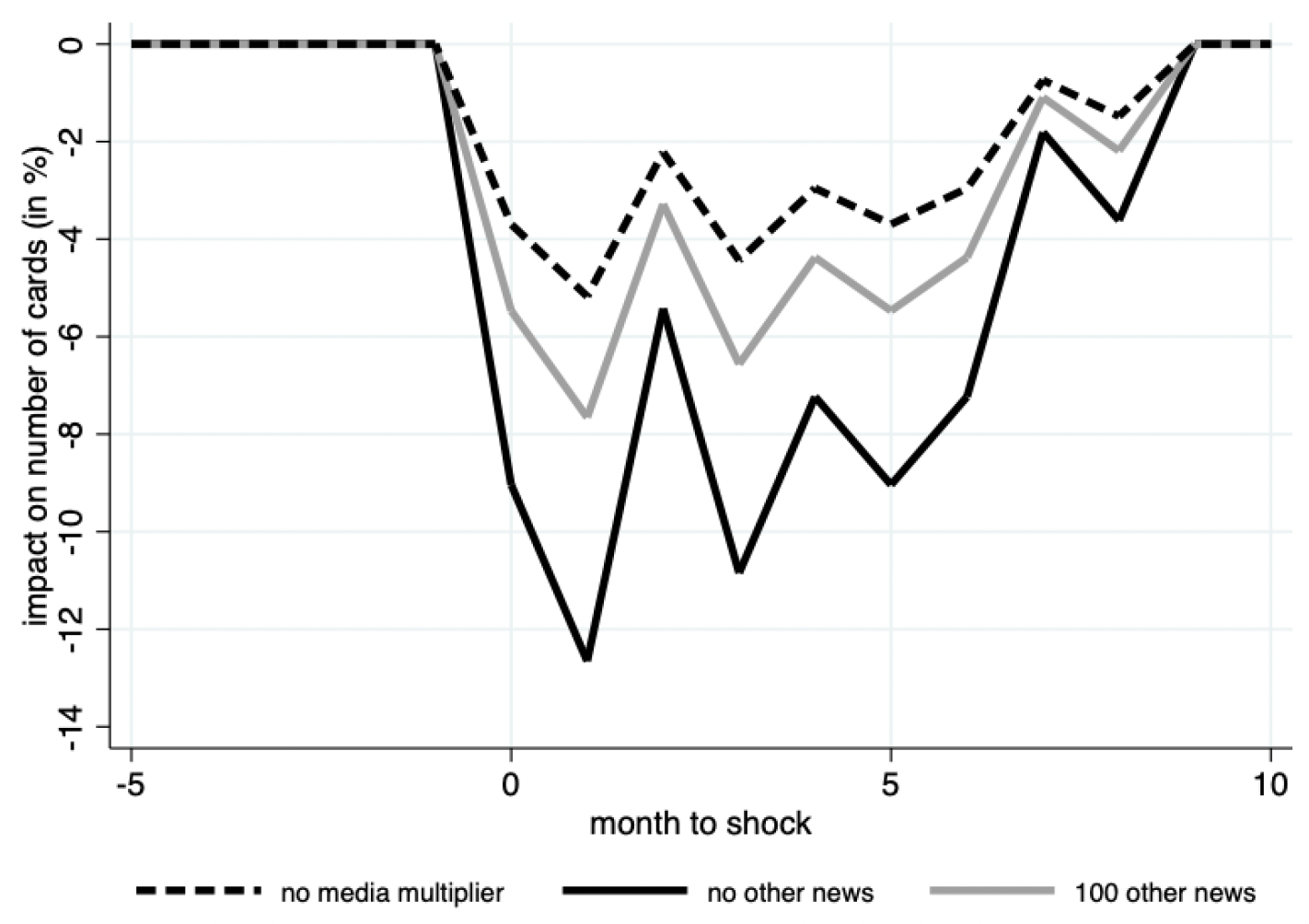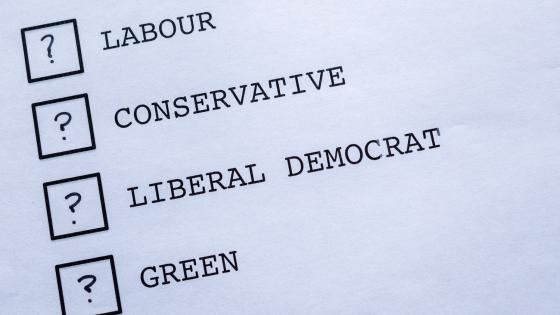The economic effects of shocks, such as terrorist events or natural disasters, crucially depend on consumers' perceptions of these shocks. These perceptions, in turn, hinge partly on the information provided by the media about these shocks. Thus, media reports are an important determinant of the degree to which consumers' perceptions correspond to the actual severity of the shock. In the US, for instance, there are staggering discrepancies between the actual number of deaths caused by terrorism and the coverage of terrorism-induced deaths received by the media. Such discrepancies could affect voters' and policymakers' preferences with respect to allocating resources to reduce the number of deaths caused by one type of shock (e.g. terrorism), rather than another (e.g. cardiovascular diseases), in ways that may not be welfare-enhancing. Understanding how information environments shape beliefs and subsequent individual decisions is therefore important. These mechanisms are, naturally, even more important at a time when the way in which information is produced (traditional versus social media), disseminated (viral versus traditional), and consumed is rapidly changing owing to technology.
While we are not the first to study the moderating effect of the media environment on economic or political outcomes (e.g. Besley and Prat 2006, Enikolopov et al. 2011, Strömberg 2015, Adena et al. 2015, Arezki et al. 2017, Allcott and Gentzkow 2017, Zhuravskayaet al. 2020, Fetzer et al. 2021, Campante et al. 2022, Alfano and Görlach 2023), our study improves on existing work in two key respects. First, many studies – especially those primarily focused on causal identification – zero in on the effect of media coverage in a single country. Second, even relatively well-identified studies tend to ignore the mechanisms underlying their reduced-form findings. To our knowledge, no existing study explicitly models events and media reports in a unified model to understand how the latter affects the formation of beliefs.
In our new paper (Besley et al. 2023), by contrast, we examine how media coverage of violent events, such as terrorist attacks, can amplify (or mute) the economic impact of these events, using not only multiple identification strategies but also providing an explicit model of consumers' belief adjustments in response to media coverage and the underlying event. Our dependent variable is credit card spending by tourists from one country in another country at different points in time. To operationalise this variable, we leverage a novel, fully dyadic credit card dataset, containing aggregate data on monthly credit card spending in one country (destination country) due to all Mastercards issued in another country (origin country). This unique dyadic credit card dataset covers 114 origin countries and five destination countries (Tunisia, Turkey, Morocco, Israel, and Egypt) between 2010 and 2016.
The key independent variable is the media coverage in the different origin countries of violent events directed at tourists that occurred in some destination country. We operationalise this by, first, creating a corpus of over 450,000 news articles in 57 origin countries. Second, we use a supervised learning algorithm – trained on roughly 30,000 manually coded news articles – to automatically detect coverage of either violence against tourists or fatal violence involving tourists. Third, we compute the share of media coverage of tourist-related violence in destination countries in a given month. Finally, we draw on commonly used datasets on political violence, including the Global Terrorism Database, to identify violent events in the five destination countries between 2010 and 2016.
Using these data, we then estimate the reduced-form relationship between media coverage and credit card spending, relying only on within-dyad variation, while also controlling for origin-month and destination-month fixed effects. In our most demanding specification, we exploit differential intensity in media coverage across origin countries and find that, as the share of media coverage of tourist violence goes from zero to one, tourist spending falls by roughly 60%. Figure 1 illustrates this finding for the Tunisian case, where spending declined more strongly for countries with intense coverage of a terror attack on a resort in October 2013 compared to those with little coverage. Using the nationality of victims as an instrumental variable for origin-country media coverage of tourist-directed violence yields similar results.
Figure 1 Card activity in Tunisia on dyads with more/less news coverage of violence
Crucially, however, we go beyond reduced-form evidence by explicitly modelling how consumers' beliefs about the probability of violent events occurring in some destination country adjust as a result of media coverage. This approach, which draws on our earlier work (Besley and Mueller 2012, Besley et al. 2015, Fetzer et al. 2020), allows us to construct a model-based measure of the media multiplier – the extent to which media coverage magnifies the economic effects of violent events. Conceptually, the model conceives of consumers' beliefs as lying on the continuum between two types of beliefs: event-based and news-based beliefs. The former correspond to consumers with correct or true beliefs by virtue of forming these beliefs solely on the basis of actual events. The latter, however, correspond to consumers whose beliefs are solely based on the media coverage in their origin country of violent events in some destination country, as opposed to the events themselves.
Figure 2 uses a version of plate notation, common in machine learning, to provide a conceptual overview of the model, with circles representing endogenous variables and squares representing exogenous parameters. One of the key difficulties when studying beliefs is that they are latent, i.e. they are not observed explicitly. In the figure, this is highlighted as the observed variables appear as shaded circles. The figure then illustrates how we use latent beliefs to explain the relationship between violence, bad news, neutral news on the left, and card activity on the right.
Figure 2 Graphical overview of the structural model
Note: The figure plots the generative model using an adaptation of plate notation common in machine learning highlighting the observable and unobservable variables, the parameter spaces, and the dependence relationships.
Based on this model, the media multiplier captures the effect of beliefs – partly formed on the basis of media coverage in some origin country – about the probability of tourist-related violence in one of the destination countries, lagged by up to nine months, on credit card spending in that country by consumers whose cards were issued in the origin country. When fitting this model to the data, we find that up to 70% of the impact of violent events is accounted for by the media multiplier. In addition, we also find a drowning-out effect, whereby neutral news can lower the impact of negative/bad news. Conversely, this implies that destinations that are not typically covered in the news experience larger economic responses to negative news shocks. This finding is in line with the behavioural economics literature, which emphasises, amongst other things, that individuals, with ‘noisy’ memories, rely on availability heuristics – the use of easily available, but possibly non-representative information – in forming their beliefs (Tversky and Kahneman 1973, Azeredo da Silveira and Woodford 2019).
Figure 3 visualises both the media multiplier and the drowning-out effect. The solid dark line, which is based on the structural model when only news of the violent event is reported in the media, implies the heaviest economic shock, while adding neutral news to the model dampens the negative media multiplier.
Figure 3 Impact of the media multiplier at different levels of background news
These results have substantial external validity, i.e. they can be generalised to other contexts, as Figure 4 shows. As in our core analysis, we use the estimated beliefs from a non-dyadic dataset to calibrate the average media multiplier during the period from 1989 to 2022. We see notable variation across countries. In particular, news-based beliefs for Afghanistan, Pakistan, and Somalia are strongly negative throughout the period so that the multiplier reaches close to its maximum of 3.33. But we also get very high values for other countries. For many countries – such as like Cambodia, India, Algeria, Turkey, Iraq, Sri Lanka, Nepal, the Philipines, Kenia, Angola, and Nigeria – we get an average multiplier close to 2. The US and Israel are located roughly in the middle of the distribution. In these instances, our model suggests that the media amplifies the effect of violent events by around 30% on average. The contrast between India – a country with a great deal of bad media coverage and a multiplier over 2.5 – and China – a country with almost entirely neutral coverage and a multiplier of 1 – is particularly striking.
The analysis also bears out that entire regions receive consistently negative coverage in the media. The average multiplier in countries with violence in Southeast Asia is 1.9; in Southern Asia, the multiplier is 2.3, while the average multiplier for Eastern and Middle Africa it is 1.6. Applying our main estimates on credit card activity to violent countries in these regions suggests large economic losses due to reductions in visitors, driven by a combination of little and negative news coverage.
Figure 4 Measuring the media multiplier across countries, 1989 to 2022
While our paper focuses on quantifying the media multiplier for a specific type of event – episodes of tourist-related violence – other events, such as natural disasters, climate-change induced extreme weather events, or electoral surprises (Fetzer and Yotzov 2023a, 2023b), may give rise to different forms of media multipliers. Future work could draw on our structural model to estimate the media multiplier for different types of shocks and do so across different contexts. Indeed, this will be a major focus of the “Media, Economics, and Geopolitics” project, which was recently awarded a European Research Council Starting Grant (CORDIS 2023, Fetzer 2023).
Authors’ note: Editorial assistance in summarising this research was provided by Jacob Edenhofer.
References
Adena, M, R Enikolopov, M Petrova, V Santarosa and E Zhuravskaya (2015), “Radio and the Rise of The Nazis in Prewar Germany”, The Quarterly Journal of Economics 130(4): 1885–1939.
Alfano, M, and J-S Görlach (2023), “Terrorism, Media Coverage, and Education: Evidence from al-Shabaab Attacks in Kenya”, Journal of the European Economic Association 21(2): 727–63.
Allcott, H and M Gentzkow (2017), “Social Media and Fake News in the 2016 Election”, Journal of Economic Perspectives 31(2): 211–36.
Arezki, R, V A Ramey, and L Sheng (2017), “News Shocks in Open Economies: Evidence from Giant Oil Discoveries”, The Quarterly Journal of Economics 132(1): 103–55.
Azeredo da Silveira, R and M Woodford (2019), “Noisy Memory and Over-Reaction to News”, AEA Papers and Proceedings 109: 557–61.
Besley, T, T Fetzer, and H Mueller (2015), “The Welfare Cost of Lawlessness: Evidence from Somali Piracy”, Journal of the European Economic Association 13(2): 203–39.
Besley, T, T Fetzer, and H Mueller (2023), “How Big Is the Media Multiplier? Evidence from Dyadic News Data”, CEPR Discussion Paper 18349.
Besley, T and H Mueller (2012), “Estimating the Peace Dividend: The Impact of Violence on House Prices in Northern Ireland”, American Economic Review 102(2): 810–33.
Besley, T and A Prat (2006), “Handcuffs for the Grabbing Hand? Media Capture and Government Accountability”, American Economic Review 96(3): 720–36.
Campante, F, R Durante, and A Tesei (2022), “Media and Social Capital”, Annual Review of Economics 14(1): 69–91.
CORDIS (2023), “Media, Economics and Geopolitics”, Factsheet, European Commission.
Enikolopov, R, M Petrova, and E Zhuravskaya (2011), “Media and Political Persuasion: Evidence from Russia”, American Economic Review 101(7): 3253–85.
Fetzer, T (2023), “Media, Economics, and Geopolitics”.
Fetzer, T, H Mueller, and T Besley (2020), “Terror and Tourism: How Bad News Can Harm Economic Development”, VoxEU.org, 14 February.
Fetzer, T, P C L Souza, O Vanden Eynde, and A L Wright (2021), “Losing on the Home Front? Battlefield Casualties, Media, and Public Support for Foreign Interventions”, BFI Working Paper.
Fetzer, T and I Yotzo (2023a), “Electoral Surprises and Business Cycles”, VoxEU.org, 10 August.
Fetzer, T and I Yotzo (2023b), “(How) Do Electoral Surprises Drive Business Cycles? Evidence from a New Dataset”, Cesifo Working Paper.
Strömberg, D (2015), “Media and Politics”, Annual Review of Economics 7(1): 173–205.
Tversky, A and D Kahneman (1973), “Availability: A Heuristic for Judging Frequency and Probability”, Cognitive Psychology 5(2): 207–32.
Zhuravskaya, E, M Petrova, and R Enikolopov (2020), “Political Effects of the Internet and Social Media”, Annual Review of Economics 12(1): 415–38.










